Why Mojave National Preserve is our Favorite Park
Published on May 15, 2020 - Updated on May 27, 2020
For the untrained eye, desolation and isolation merge like crossroads in the heart of the 1.6 million acre Mojave National Preserve. Often used as the backroad between Vegas and Joshua Tree, few have reasons to linger - often just heading to or fro - rarely with this mysterious spot as the destination.
My first taste of the Mojave magic was intoxicating. I departed Joshua Tree at 4 AM to arrive in Vegas by 8 PM on a mid-November day. As I crested the south-western access to the park, the sun was just beginning to bake the Granite Mountains and its jumbled formations stood like stone figures stuck in time. Onward past towering dunes, an empty desert of all colors in that glowing early light, massive tumbling boulders, a sea of Joshua Trees and distant volcanos - it honestly felt like time travel. Needless to say - I was taken and I couldn’t wait to bring my family.
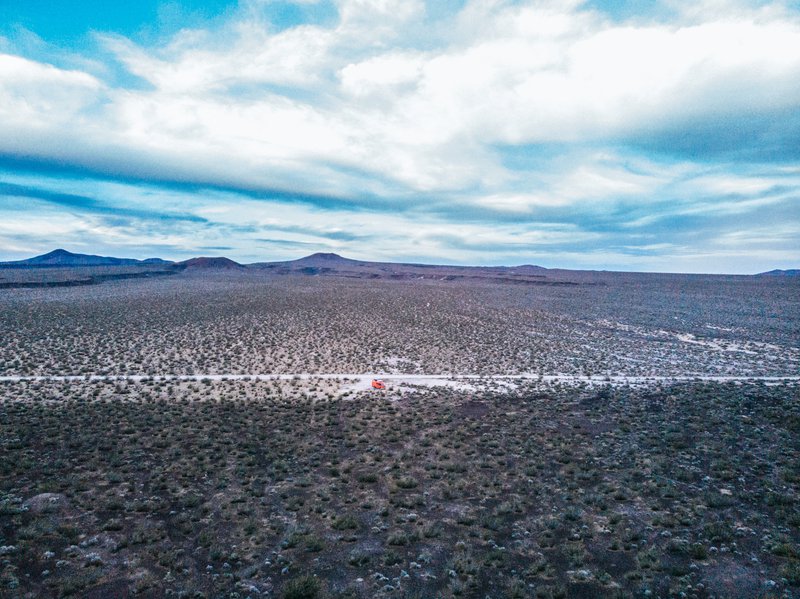
It was midwinter when we returned to seek a reprieve from cell service and bathe in natural beauty. We tucked off the main road at sundown, following our map to a GPS point that was shared with me as “the raddest campsite in America” and parked as the sun dropped, leaving us anxious for the next morning’s discovery. We woke up cold, the sun peering in at various angles through the mountain of rocks surrounding us. Our heater in our overloading rig was malfunctioning, so we walked out of the van early, donned in hats and gloves, stumbling our way into a magnificent slumbering cactus garden. Our five year old rattled off cacti names after learning so much about the desert in Joshua Tree - Cholla, Pencil Cholla, California Barrell, Porcupine - all resting in subdued silence. This trip was short, but left us wondering what else could be found in this vast desert.
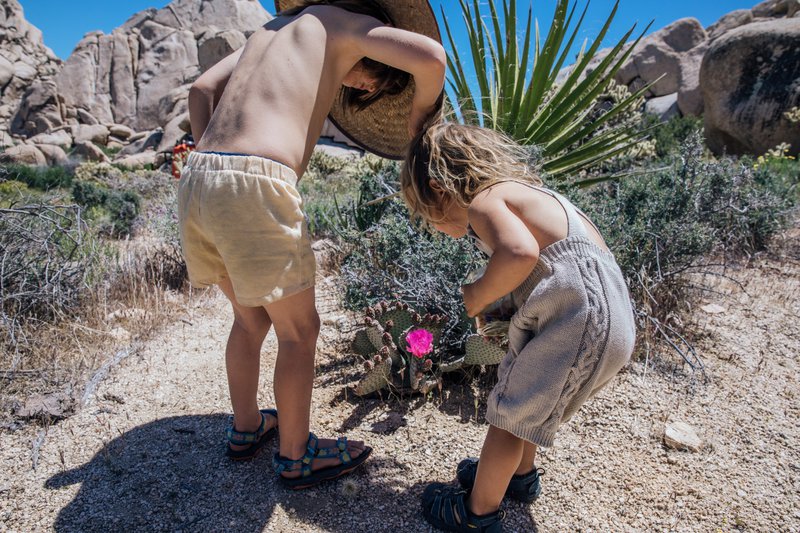
Our next visit was more like my first - a drive-by - again on our way to Vegas. This time, the ocean of Joshua Trees called us in for some quick photos. We had been living in Joshua Tree at the time, but these particular trees felt like the thin and gangly younger brother of those found at Joshua Tree National Park. My son named them various monster names as we snapped some candids amongst them. We drove on to Vegas for a flight and a few weeks later were treated again to a trip back through the preserve - this time without stops but equally impressed with the sunset show.
Finally, in late April with an open schedule, we planned our own return to one of the few National Preserves left open during the COVID-19 Pandemic. This time around we had twice the water, fuel, and food preserves coupled with no agenda. If my first impression yielded isolation, this trip to the Mojave mimicked more of an uninhabited island or a socially distanced desert - there were virtually no cars on the road, save the brave weekend warriors overlanding the legendary Mojave Desert Road.
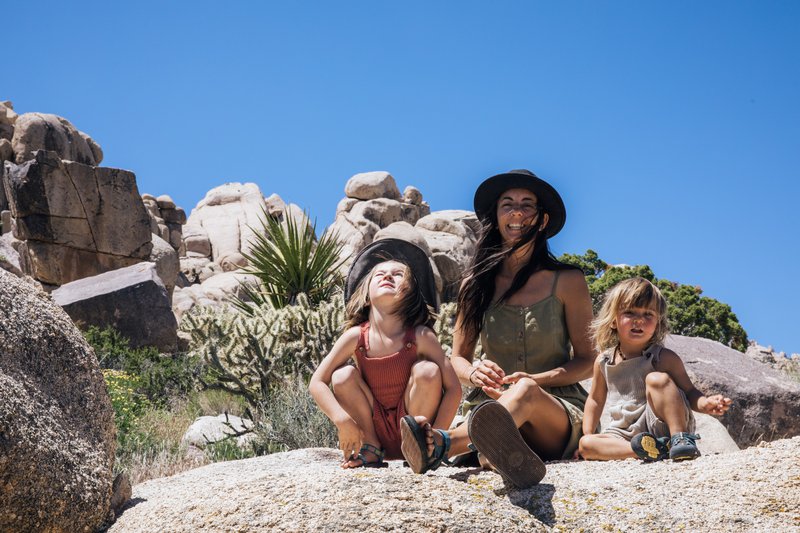
We entered the Preserve from Baker, CA. While the Dried Soda Bed on the western flank called for our attention, we opted to spend the night at the cinder cones, driving about five miles off road to park in the heart of a handful of dormant volcanos. On our drive in, I screeched the van to a halt when a small familiar looking shape caught my eye. I reversed and we were treated with our first family Desert Tortoise encounter. It was a baby, perhaps just a year old and it was clear spring had arrived in this place I first thought looked dead. Both of my sons went wild - knowing how rare an encounter with this elusive species is.
The area around the cinder cones feels hotter than elsewhere in the park. With the black rock towering above, thick under the feet, and only crest scrub around, it felt like there was no protection from the sun, save the underground lava tubes found at the end of this road. We followed our noses to the spot and hiked a short ten minute walk into the mouth of the cave where we descended into a lava chamber with light pouring in from gaping holes in the cave above. It was a solid twenty degrees cooler inside and we lingered, gathering our energy for the long afternoon in the sun. On the way out, I began to notice the colors around me, the cacti blooming pink, multi-colored wildflowers lining the trail and roadways and the scrubs in bloom. After seeing this stark desert in winter, I felt as if I had stumbled upon a secret - a moment the land was sharing with us.
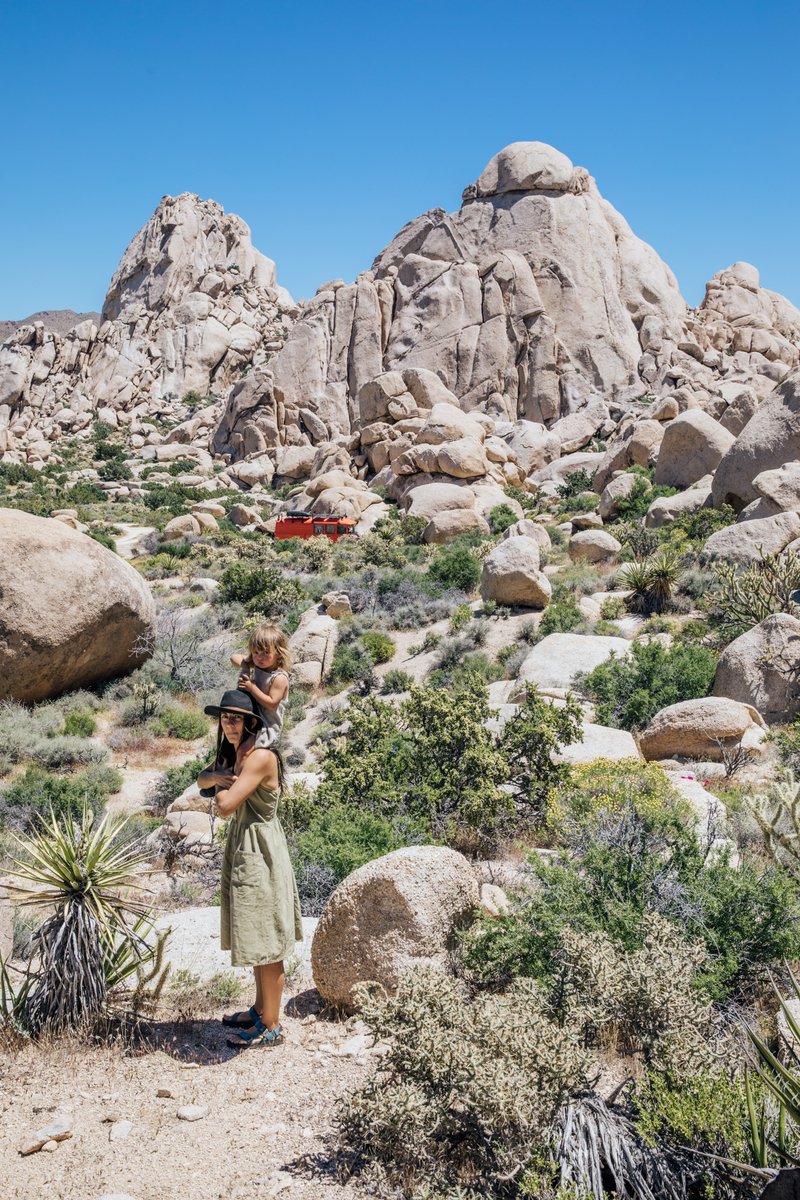
We carried on about twenty miles through various desert ecosystems to the Kelso Dunes for the afternoon and sunset. Upon arriving we learned that this environment was the largest desert dune in North America, dwarfing White Sands National Monument and Great Sand Dunes National Park. We waited out the intense afternoon sun and crawled out of our van after an early dinner to see the light begin to change. Again with not a soul in sight, we participated in the Mojave magic as the setting sun created shadowy shapes in the dunes surrounding us, while we raced our five year old up and down the steep sandy dunes.
The next day and night took us back to the Granite Mountains, and this time around the mountains truly felt like they had awoken. All of the plant life nestled between the boulders had flowered in a rich color palate. Lusty Desert Mallow bled orange, Porcupine Cactus birthed hot pink perfect petals, lightning green Cholla’s producing yellow bulbs about to flower and Pencil Chollas with hot red tips - you could feel the pulse of life, but of course we had already learned not to get too close as every plant had various sized daggers to pierce clothing and skin. The lizards too, were out. One friendly enough to run over my wife’s shoe and sit between my sons legs for almost five minutes. We wandered the boulders drinking in this intoxicating yet often mistaken land - vowing that we would return again and again.
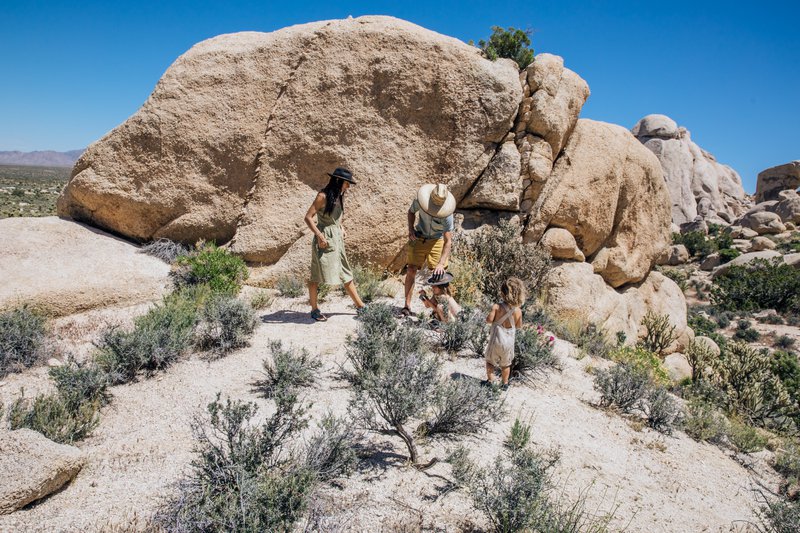
The road then took us on the familiar path toward Vegas, passing Kelso perhaps ten miles away and another ten before we entered the sea of Joshua Trees - the largest swath of these wonderful trees on the planet. We thought of testing our mettle on the Mojave Desert Road, but thought better of it, choosing to gain elevation up to the campgrounds and visitors center in the center of the park. It’s hard to imagine these sites are used much as the dirt road access on all sides provides a stiff barrier to entry for many seeking a convenient roadside national park experience.
Perhaps this is why we love it so much here - the challenge of the place, the lack of tourists and resources, the right to walk freely anywhere in the preserve coupled with the right to camp 1/4 mile off the main roads in established spots. Together, it led us to what was a pinnacle moment for us. High above the Mojave, camped out in one of those hidden, but established spots, we were radiating as the sun cast long shadows over the convergence of the Mojave, the Sonoran and the Great Basin Deserts - which creates the 30 unique ecosystems inside the park. With the setting sun, we all agreed our hearts were officially stolen by the Mojave’s many masks. We lingered until our water resources ran out, forcing us out of the Preserve and on with our own journey across the country.
We have traveled across the country and visited National Parks all over, but in my humble perspective, the Mojave Desert Preserve is at the top of my list for one of the raddest parks in America and I encourage you to get outfitted and visit.
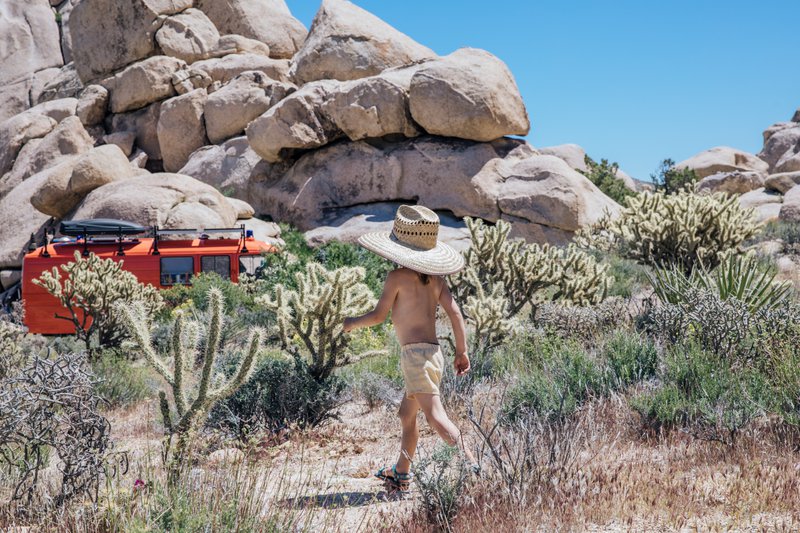
PRO TIPS
Day trippers - Visit the Joshua Trees, Lava Tubes and Kelso Dunes - all within a day of Vegas.
Campers - Choose your own adventure with various habitats to camp in within the park.
Overlanders - drive the Mojave Desert Road midweek, it’s packed on the weekend.
Flower enthusiasts - Visit in late April to see the most flowers.
For all - Bring enough water, fuel, food, sun protection, and recovery resources for your stay. The desert is incredibly hostile and a couple of errors or mistakes will lead to adverse consequences.
Don’t expect a typical National Park experience, this is truly a desolate wilderness with few guide posts, trails and “official side of the road” features. Be prepared to create your own adventure.
If you have a story to share or a favorite landscape, share is with us at team@happyly.com. For another adventure story, check out our blog Dreaming of Safe Travel: Dry Tortugas. Or let us help you get inspired with our blog Dream Up Your Next Adventure.